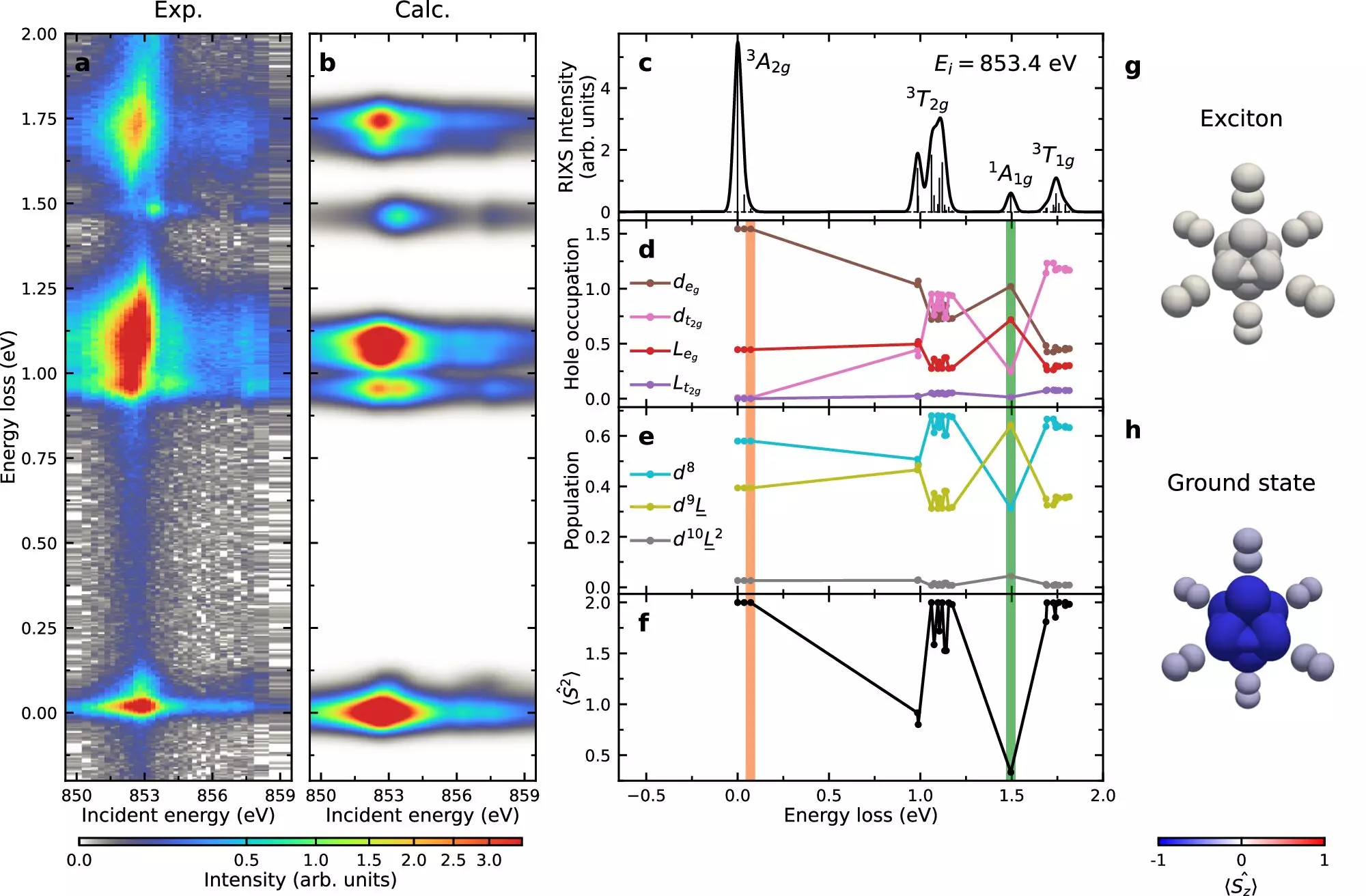Van der Waals magnets represent a fascinating and innovative class of materials characterized by their unique interplay between optical properties and magnetism. Among these materials, nickel phosphorus trisulfide (NiPS3) has emerged as a key subject of study due to its intriguing physical properties and potential applications in next-generation technologies, particularly in the realm of information storage. Recent research by a team from the U.S. Department of Energy’s Brookhaven National Laboratory has shed light on the complex phenomena surrounding excitons in NiPS3, expanding our understanding of these microscopic entities and their magnetic interactions.
Excitons are quasiparticles formed when an electron binds to an electron vacancy, or “hole,” creating a coupled unit that behaves as if it were a single particle. This definition, while fundamental, belies the complexity of excitons within the crystal lattice of materials such as NiPS3. Their behavior is dictated by various physical interactions, leading researchers to investigate how these mobile excitons can influence and be influenced by the magnetic properties of their host material. The formation and dynamics of excitons are integral to the development of technologies utilizing light and magnetism, which could pave the way for advanced applications in quantum computing and energy-efficient data storage systems.
The Brookhaven research group harnessed the power of the National Synchrotron Light Source II (NSLS-II) for their study, employing a technique known as resonant inelastic X-ray scattering (RIXS). This method allows for the probing of materials at a molecular level using an intense beam of X-ray light, capturing the intricate behaviors of electrons and holes when they interact within a crystalline lattice. The Soft Inelastic X-ray Scattering (SIX) beamline at NSLS-II provided the researchers with the necessary resolution to illuminate the exciton dynamics within NiPS3, presenting a compelling glimpse into the underlying physics at play.
The breakthrough research identified the Hund’s exchange interaction as playing a pivotal role in determining how excitons form and propagate through the NiPS3 crystal. This principle governs the magnetic properties of electron spins, influencing the energy states essential for exciton formation. The coupling of excitons with other quasiparticles, specifically double-magnons—collective excitations related to electron spins—highlights the intertwined nature of electronic and magnetic behaviors in van der Waals materials. The finding that excitons disperse through the crystal akin to double-magnons adds depth to our understanding of exciton dynamics and their potential applications.
The implications of this research extend far beyond the laboratory. By elucidating the fundamental interactions between excitons and magnetism, scientists are laying the groundwork for future explorations into novel technologies. The ability to manipulate excitons and exploit their properties could lead to advancements in how we store and process information. As techniques such as RIXS and advanced electron microscopy continue to evolve, researchers anticipate uncovering even deeper insights into NiPS3 and similar materials, potentially revolutionizing fields ranging from quantum computing to spintronics.
The recent findings on excitons in nickel phosphorus trisulfide by the team at Brookhaven National Laboratory mark a significant step in material science. By unveiling the intricate relationships between excitons and magnetism in van der Waals magnets, this research not only furthers our theoretical understanding but also opens the door to practical applications that could change the face of technology in the coming years. As further studies leverage the advanced capabilities of synchrotron facilities, the journey into the microscopic world of excitons promises to yield even more groundbreaking discoveries.


Leave a Reply